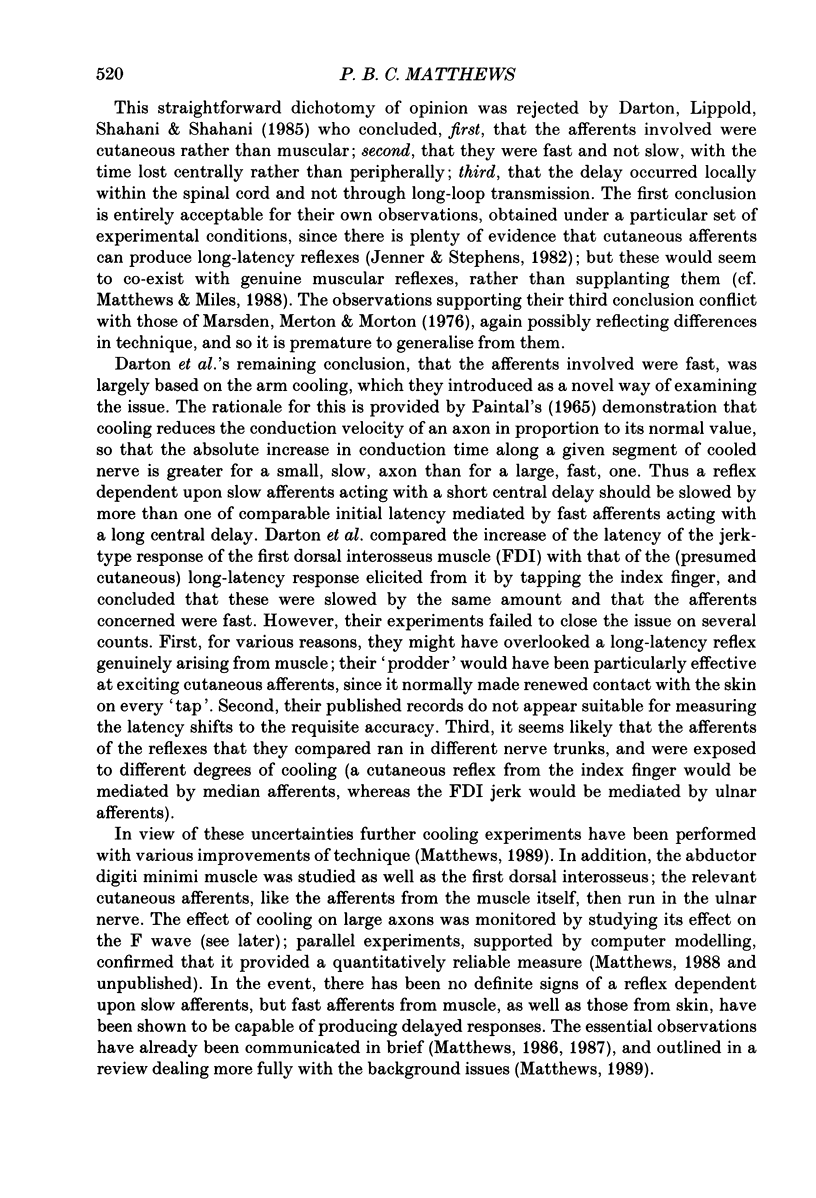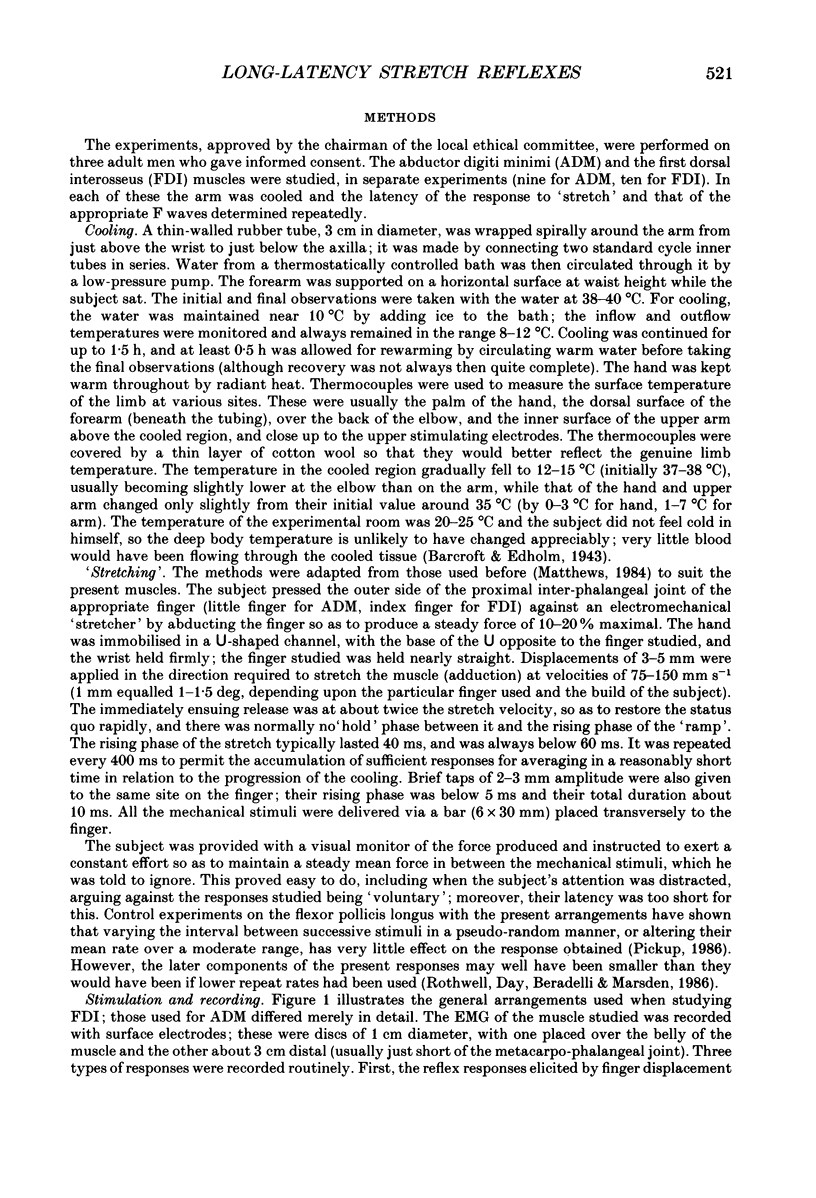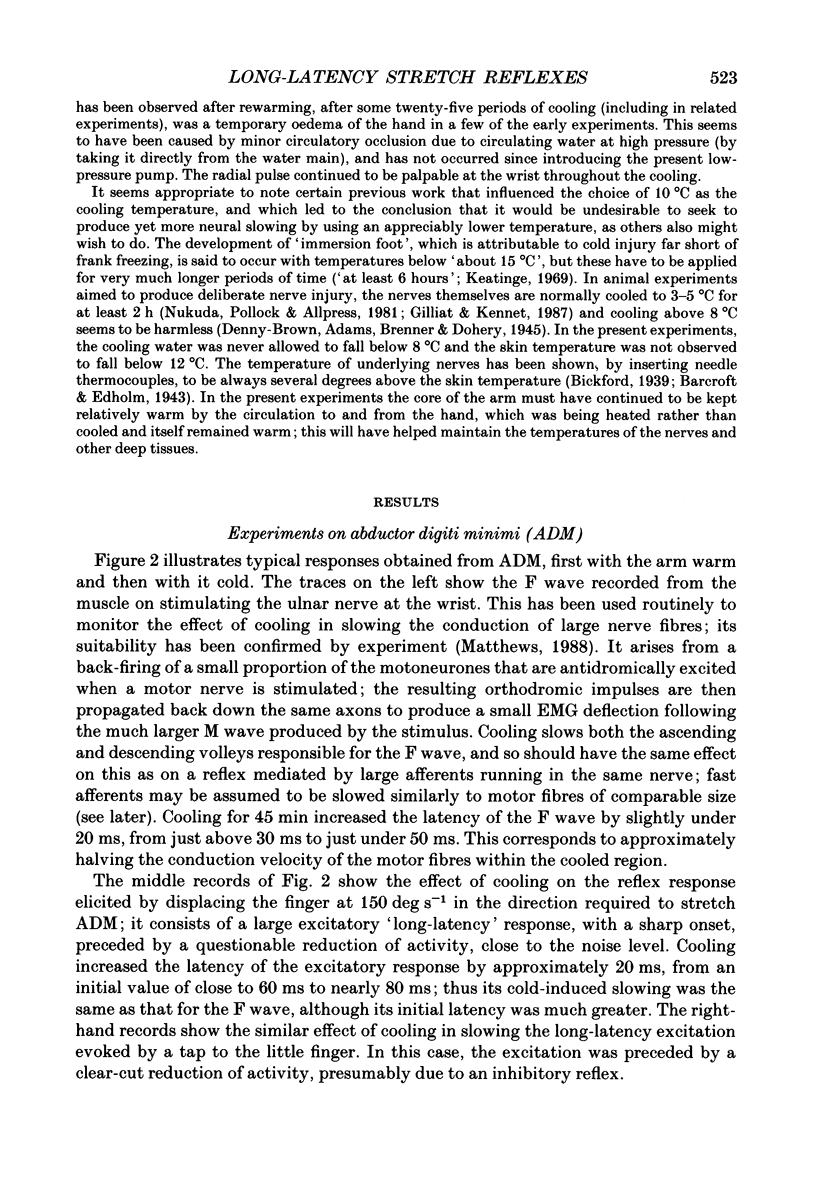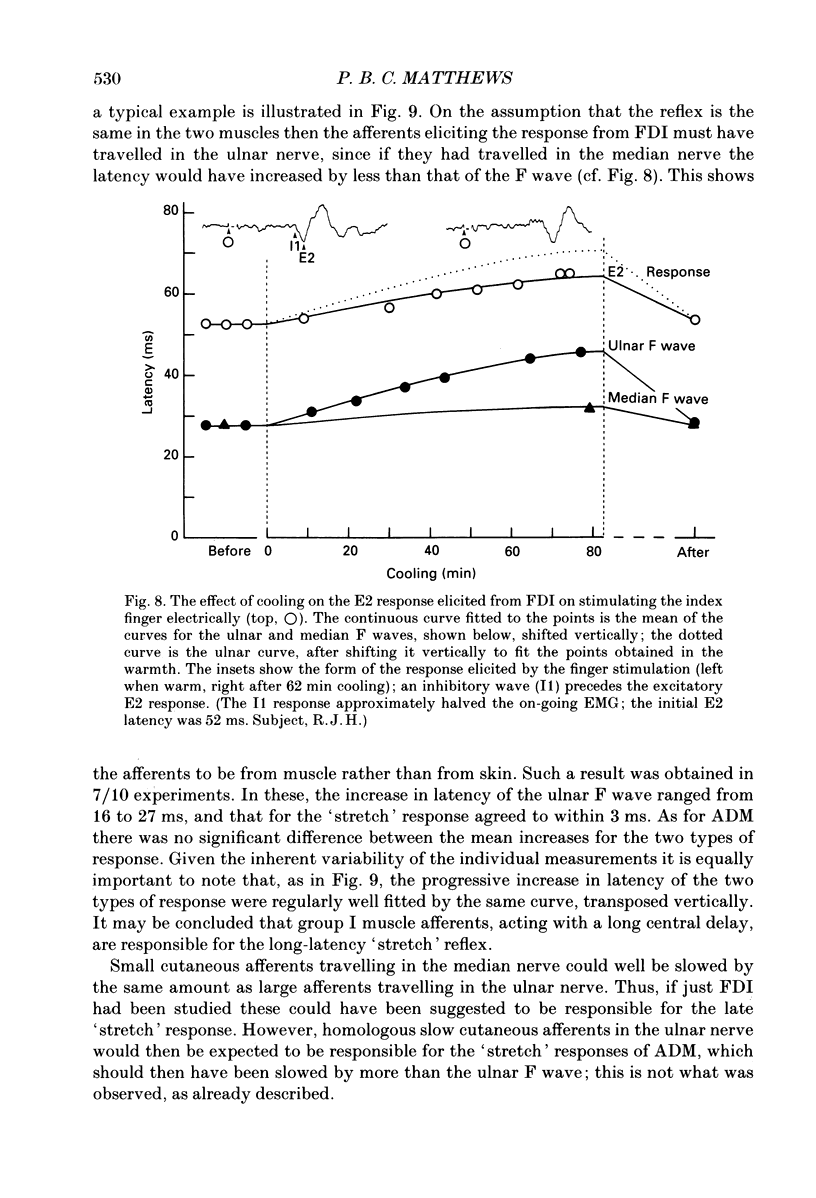Abstract
1. The arm was cooled to examine the effect of slowing nervous conduction on the latency of various reflex responses of the abductor digiti minimi (ADM) and the first dorsal interosseus (FDI) muscles. A reflex dependent upon slow afferents acting with a short central delay should be slowed by more than one of comparable initial latency, but dependent upon fast afferents acting with a long central delay. The F wave seen in the EMG on stimulating the ulnar nerve was used to assess the effect of cooling in slowing fast fibres. 2. Cooling showed that the prominent long-latency excitation evoked on stretching one or other muscle by displacing the appropriate finger is medicated by fast afferent fibres. 3. Both fast cutaneous and group I muscles afferents were found to be capable of contributing to the long-latency responses. The muscle afferent contribution was consistently dominant for slow 'stretches', while a cutaneous afferent contribution was sometimes recognizable for finger taps. 4. The distinction proved possible because the cutaneous afferents from the relevant finger run in the median nerve for FDI and the ulnar nerve for ADM. The cooling produced much greater slowing of conduction for the ulnar nerve. 5. The prior suggestion that spindle group II afferents are responsible for the major part of the long-latency component of the human stretch reflex thus fails to stand; however, some contribution has not been finally excluded.
Full text
PDF



















Selected References
These references are in PubMed. This may not be the complete list of references from this article.
- Appelberg B., Johansson H., Kalistratov G. The influence of group II muscle afferents and low threshold skin afferents on dynamic fusimotor neurones to the triceps surae of the cat. Brain Res. 1977 Aug 19;132(1):153–158. doi: 10.1016/0006-8993(77)90713-2. [DOI] [PubMed] [Google Scholar]
- Barcroft H., Edholm O. G. The effect of temperature on blood flow and deep temperature in the human forearm. J Physiol. 1943 Jun 30;102(1):5–20. doi: 10.1113/jphysiol.1943.sp004009. [DOI] [PMC free article] [PubMed] [Google Scholar]
- Burke D., Adams R. W., Skuse N. F. The effects of voluntary contraction on the H reflex of human limb muscles. Brain. 1989 Apr;112(Pt 2):417–433. doi: 10.1093/brain/112.2.417. [DOI] [PubMed] [Google Scholar]
- Darton K., Lippold O. C., Shahani M., Shahani U. Long-latency spinal reflexes in humans. J Neurophysiol. 1985 Jun;53(6):1604–1618. doi: 10.1152/jn.1985.53.6.1604. [DOI] [PubMed] [Google Scholar]
- Garnett R., Stephens J. A. The reflex responses of single motor units in human first dorsal interosseous muscle following cutaneous afferent stimulation. J Physiol. 1980 Jun;303:351–364. doi: 10.1113/jphysiol.1980.sp013290. [DOI] [PMC free article] [PubMed] [Google Scholar]
- Jenner J. R., Stephens J. A. Cutaneous reflex responses and their central nervous pathways studied in man. J Physiol. 1982 Dec;333:405–419. doi: 10.1113/jphysiol.1982.sp014461. [DOI] [PMC free article] [PubMed] [Google Scholar]
- Kimura J., Yanagisawa H., Yamada T., Mitsudome A., Sasaki H., Kimura A. Is the F wave elicited in a select group of motoneurons? Muscle Nerve. 1984 Jun;7(5):392–399. doi: 10.1002/mus.880070509. [DOI] [PubMed] [Google Scholar]
- Marsden C. D., Merton P. A., Morton H. B. Stretch reflex and servo action in a variety of human muscles. J Physiol. 1976 Jul;259(2):531–560. doi: 10.1113/jphysiol.1976.sp011481. [DOI] [PMC free article] [PubMed] [Google Scholar]
- Matthews P. B. Evidence from the use of vibration that the human long-latency stretch reflex depends upon spindle secondary afferents. J Physiol. 1984 Mar;348:383–415. doi: 10.1113/jphysiol.1984.sp015116. [DOI] [PMC free article] [PubMed] [Google Scholar]
- Matthews P. B., Miles T. S. On the long-latency reflex responses of the human flexor digitorum profundus. J Physiol. 1988 Oct;404:515–534. doi: 10.1113/jphysiol.1988.sp017303. [DOI] [PMC free article] [PubMed] [Google Scholar]
- Nukada H., Pollock M., Allpress S. Experimental cold injury to peripheral nerve. Brain. 1981 Dec;104(Pt 4):779–811. doi: 10.1093/brain/104.4.779. [DOI] [PubMed] [Google Scholar]
- Rothwell J. C., Day B. L., Berardelli A., Marsden C. D. Habituation and conditioning of the human long latency stretch reflex. Exp Brain Res. 1986;63(1):197–204. doi: 10.1007/BF00235664. [DOI] [PubMed] [Google Scholar]
- Stopford J. S. The Variation in Distribution of the Cutaneous Nerves of the Hand and Digits. J Anat. 1918 Oct;53(Pt 1):14–25. [PMC free article] [PubMed] [Google Scholar]


